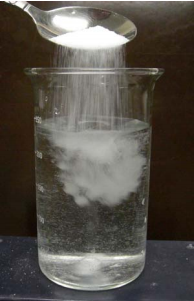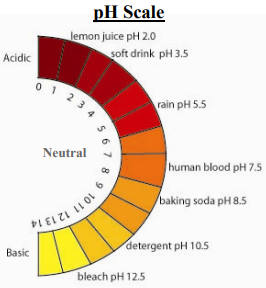Alkalinity, pH, and Total Dissolved Solids
View/Download PDF Version
Alkalinity, pH, and total dissolved solids (TDS) are three basic parameters which generally do not fluctuate dramatically in well water over time and can therefore provide valuable insight about the water supply.
 Total Dissolved Solids (TDS)
Total Dissolved Solids (TDS)
TDS is a measure of the material in a water sample that is smaller than 2 microns (2 millionths of a meter) and cannot be removed by a traditional filter. TDS is basically the sum of all minerals, metals, and salts dissolved in the water and is a good general indicator of water quality.
TDS is classified as a secondary contaminant by the US Environmental Protection Agency (USEPA) and a suggested maximum for drinking water is 500 mg/L. This secondary standard is set because elevated TDS can give water a murky appearance and detract from the taste quality of the water. People not accustomed to water with high TDS may experience gastrointestinal irritation from drinking the water. TDS can also interfere with treatment devices and is an important consideration if installing a treatment system. Treatment of water for TDS can be accomplished by reverse osmosis or distillation.
Alkalinity and pH
Alkalinity and pH are closely related and often measured together. pH is a measurement of the concentration of hydrogen ions or the acidity of water. Alkalinity is the ability of the water to neutralize or buffer changes in acidity.
pH is classified as a secondary contaminant by the USEPA with a suggested range of 6.5 to 8.5. As you can see by the pH of soft drinks on the graphic, pH values out of the suggested range do not pose a direct health risk. However, pH values below 6.5 may indicate corrosive water which can mobilize metals from pipes. For pH values below 6.5, consider a corrosivity test and/or a test for metals (especially lead and copper).
High alkalinity does not pose a direct health risk but may lead to scaling in pipes and water heaters. This can shorten the life of water heaters and cause troublesome buildup on fixtures and appliances. Water softening is a common household treatment technique to address scaling issues.
Additional Resources
Click on the links below to be directed to more resources.
World Health Organization Total Dissolved Solids in Drinking Water
Corrosion ... in Drinking Water Systems; Wilkes University Center for Environmental Quality
